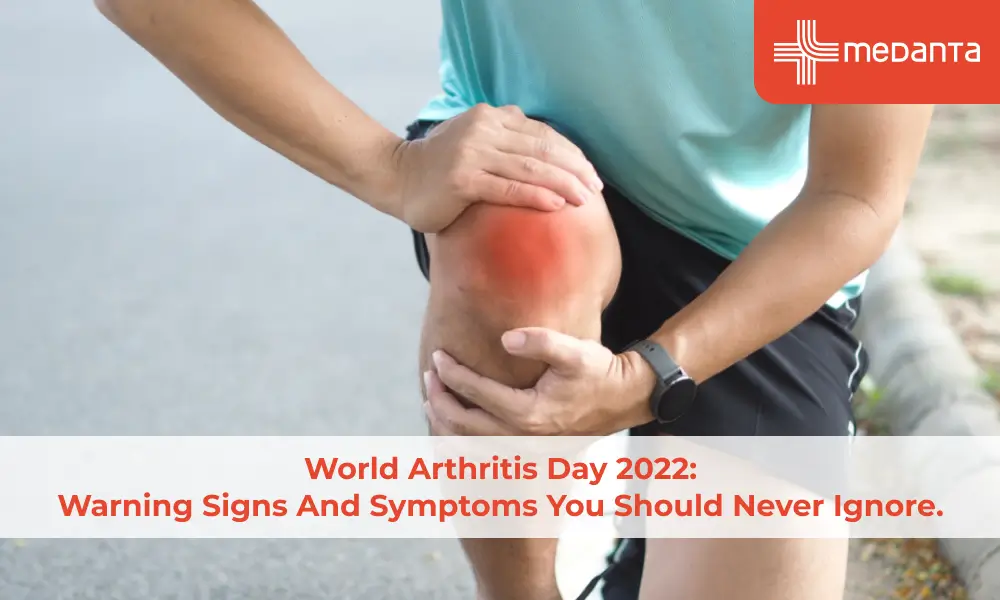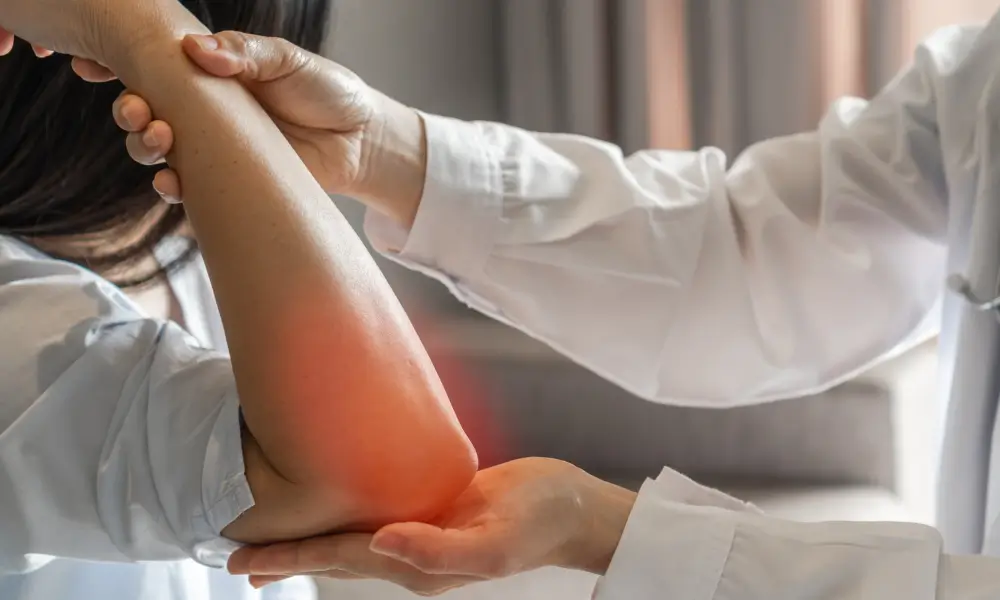World Arthritis Day 2022: Warning Signs And Symptoms You Should Never Ignore.

TABLE OF CONTENTS
Introduction
Inflammatory Arthritis causes the joints to swell and become tender. There are many different types of arthritis, but most types cause pain and stiffness in the affected areas of the joints. Some common types of inflammatory arthritis are rheumatoid arthritis, gout, and fibromyalgia.
Arthritis is a condition that worsens with age, and therefore early interventions can help prevent severe effects that restrict a patient’s day-to-day movements. Several risk factors can be controlled to reduce the risk of certain types of arthritis, which include overweight and obesity, joint injuries, and smoking. While one cannot control other risk factors such as age, gender, and genetics and has to depend on treatments and medications.
The treatments involved are hydrotherapy, physiotherapy, or at times, intraarticular injections in early arthritis and joint replacement surgeries. Medications administered are generally non-steroidal anti-inflammatory drugs, steroids, analgesics, narcotics, and immunosuppressive drugs.
Early Signs of Arthritis
As arthritis is a condition affecting the joints, early signs indicating the onset of the condition are mostly observed around those areas:
Pain in joint or arthralgia
This is the first sign of arthritis. The pain is usually a dull ache or a burning sensation.
The pain progresses with continuous use of the joints.
Swelling and tenderness
Pain due to arthritis may lead to swelling of the joint.
Inflammation results from excess synovial fluid (a joint lubricant), which also restricts movement.
Redness
Due to pain and inflammation, some patients may observe redness around the joints.
Stiffness (especially in the morning)
Stiffness occurs first thing in the morning due to lack of lubrication.
This may also be triggered by cold weather or humidity.
Loss of range of motion / deformity
Causes of Arthritis
There are several reasons that might cause different types of arthritis, such as:
Joint overuse and wear and tear
Age (especially adults over 50 years)
Injuries in the joints
Lifestyle choices (unhealthy diet, obesity, smoking, etc.)
Autoimmune disorders
Genetic or family history
Muscle weakness

Diagnosis of Arthritis
To identify the exact type of arthritis, various laboratory tests and imaging methods are prescribed:
1. Laboratory Tests
Body fluids commonly analyzed: blood, urine, and joint fluids.
For joint fluid analysis, doctors cleanse the area, apply a numbing cream, then insert a needle into the joint to extract fluid.
2. Imaging
X-Ray – Helps visualize bone damage, cartilage loss, and bone spurs. Useful for tracking progression (not early onset).
CT Scan – Produces cross-sectional views of bones and soft tissues.
MRI – Uses radio waves and magnetic fields to give detailed cross-sectional images of soft tissues.
Ultrasound – Uses high-frequency sound waves to image soft tissues; also guides needle placement during fluid extraction or medication administration.
Arthritis Symptoms
Typical pain areas include: joints, ankle, back, fingers, hands, muscles, neck, or wrist.
Joints – Early stiffness, tenderness, and swelling that worsen over time.
Muscles – Restricted motion range around the joints; muscle weakness.
Hands/Fingers – Uric acid buildup may cause bumps or bony outgrowths in fingers or toes.
Whole Body – Fatigue or malaise due to constant pain and weakness.
Other common symptoms: flare-ups, physical deformity, redness, or stiff neck.
World Arthritis Day
Each year on October 12, World Arthritis Day is observed to create general awareness about this disease. Every year, a new theme is highlighted to encourage action.
This year’s theme: “It’s in your hand; take action.”
The aim is to improve the quality of life for those suffering from arthritis by encouraging patients, their families, caregivers, and the community to take meaningful steps toward better management.






